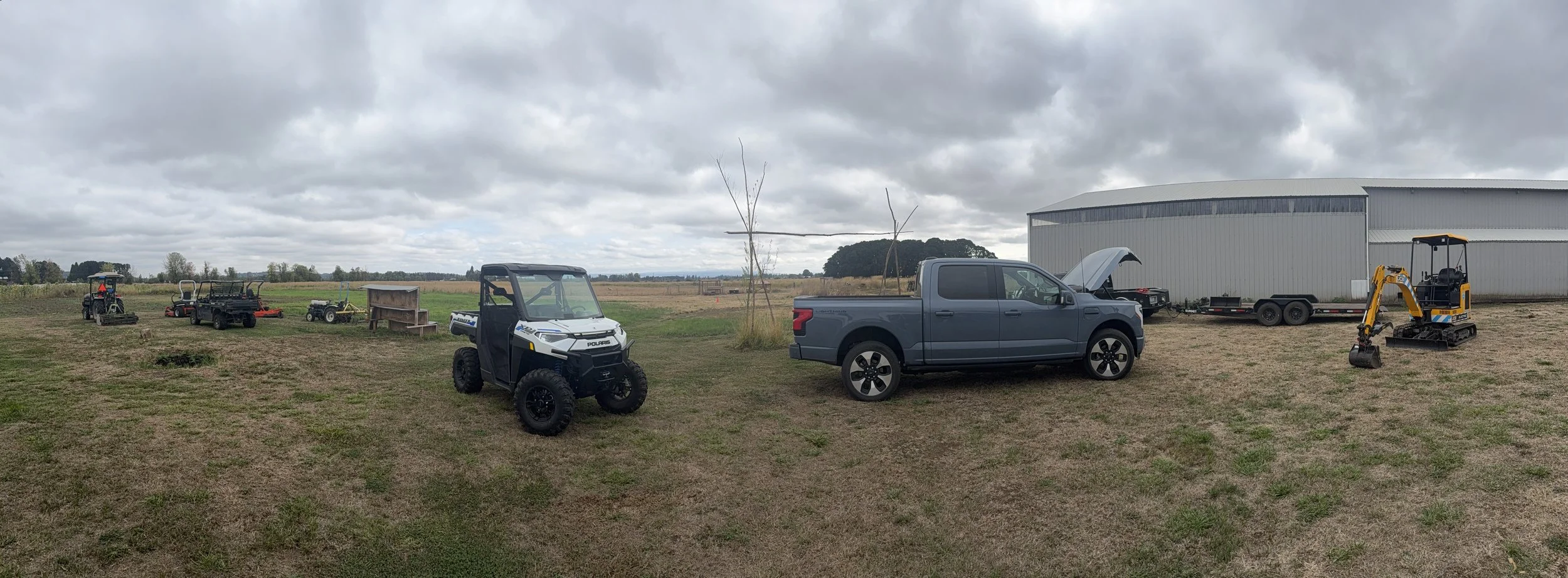Electric Farming in Action: Lessons from the Anahuac Farm Demonstration
By: Sarah Gledhill, Clean Energy Markets and Finance Manager
Participants arrived one crisp September morning to the gentle sounds of Anahuac Farm waking up. The E-Farms team, who works to evaluate and accelerate the adoption of electric farming equipment, and the Anahuac Farm crew welcomed guests with coffee, snacks, and a display of electric farming equipment. Our all-electric quiver included a tractor, UTV side-by-side, mini-excavator, mower, and truck. Though every machine was powered on, the only sounds were birdsong and soft conversation.
“You can’t hear it, but all the equipment is idling right now,” Robert Wallace, from the E-Farms team, pointed out. The quiet operation is one of the most noticeable benefits of electric farming equipment.
The group began with a candid discussion. Our goal was to explore both the perks and the challenges of electric farming equipment. E-Farms serves as a neutral party, providing honest feedback on what people like and dislike about electric farm equipment. David and Robert from E-Farms, alongside Javier from Capaces Leadership Institute, walked participants through each piece.
The Monarch MK-V tractor looks ultra-modern—because it is. With cameras on all sides, operators can monitor implements while facing forward, and Javier said that swapping implements is easy. Its quiet operation offers an “entirely different experience” compared to conventional tractors. The Anahuac team also appreciated the absence of exhaust fumes.
The Polaris Ranger Kinetic UTV is one of the most popular pieces of equipment in the fleet, according to Robert. It drives smoothly and has countless applications: getting around the farm, adjusting irrigation, hauling hay or feed, towing trailers, plowing snow, and more.
The Ford F-150 Lightning Truck is recognized for its off-grid and resiliency capabilities. Attendees discussed how it can power critical loads during outages or emergencies, and how food vendors use it instead of noisy generators. On farms, it can run irrigation pumps, cooling fans, welders, saws, hand tools, and even recharge other vehicles.
The JCB mini-excavator is a newer addition to the E-Farms fleet. Robert, who tests equipment on his own farm, reports it performs exceptionally well: strong, reliable, and capable of everything a diesel model can do. Thanks to its zero emissions and quiet operation, it can even be used indoors. Javier plans to put it to work at Anahuac in the coming month.
The STIHL RZ Mower, according to Javier, “rides like a horse.” It’s also extremely fast. Where mowing used to take him 45 minutes, now it takes 15. The only sound comes from the blades, making it quiet and efficient.
Electric equipment on display included Monarch MK-V Tractor (far left), STIHL RZ Mower (second to the left), Polaris Ranger Kinetic UTV (center left), Ford F-150 Lightning Truck (center right), and JCB mini-excavator (far right).
With electric equipment, farmers don’t have to purchase or maintain diesel storage tanks or drive long distances to refuel. On-farm charging makes energy readily available, and maintenance costs are lower since electric vehicles have fewer parts. In Oregon, electricity costs significantly less than diesel–fully charging a vehicle can cost as little as $9.
Of course, there are challenges. As David put it, “you’re trading diesel problems for electric problems.” The biggest hurdle is cost: electric equipment often runs nearly double the price of combustion engines. Without incentives like those in California and Washington, Oregon farmers struggle to justify the cost. Charging routines also take adjustment. And most dealerships that sell electric equipment are not yet fully equipped for maintenance and repairs. We also don’t know how long this equipment will last, as these models are all relatively new.
After the discussion, participants test drove the equipment--driving the tractor, zipping around the farm in the UTV, and getting on the mower and excavator. The hands-on experience helped farmers and guests imagine what going electric might look like in their own operations.
About E-Farms: Four non-profits–Sustainable Northwest, Forth, Wy’East RC&D, and Bonneville Environmental Foundation–coordinate the E-Farms program to bring electric farm equipment to farms, forests, ranches, and other operations across the PNW.
Recent Case Study: Read our case study documenting Anahuac Farm’s detailed experiences using the Monarch MK-V.
This event was made possible by DEQ’s Oregon Clean Fuels Program via the PGE Drive Change Fund, which partners with E-Farms to help procure equipment and host demonstrations like this one.
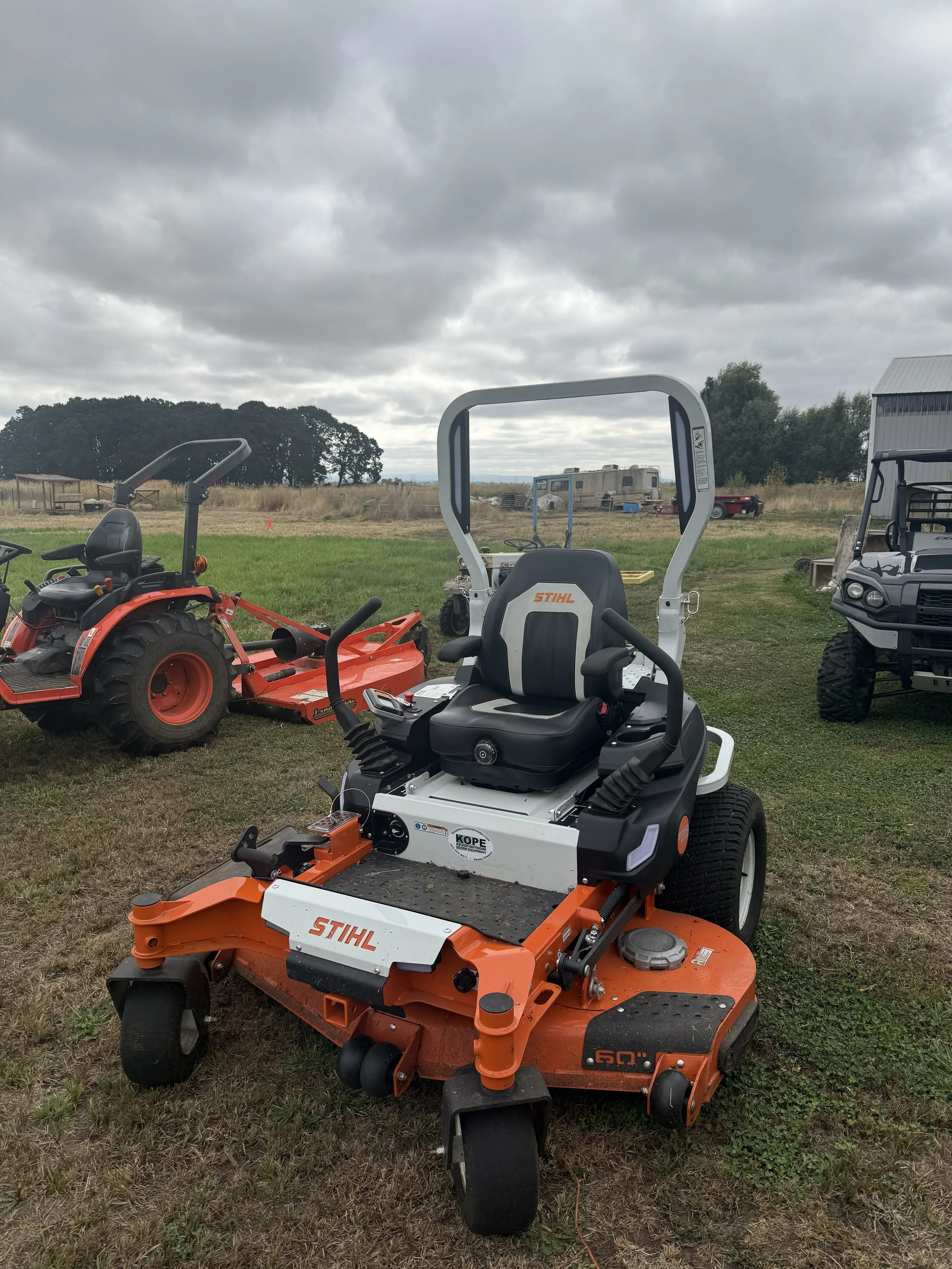
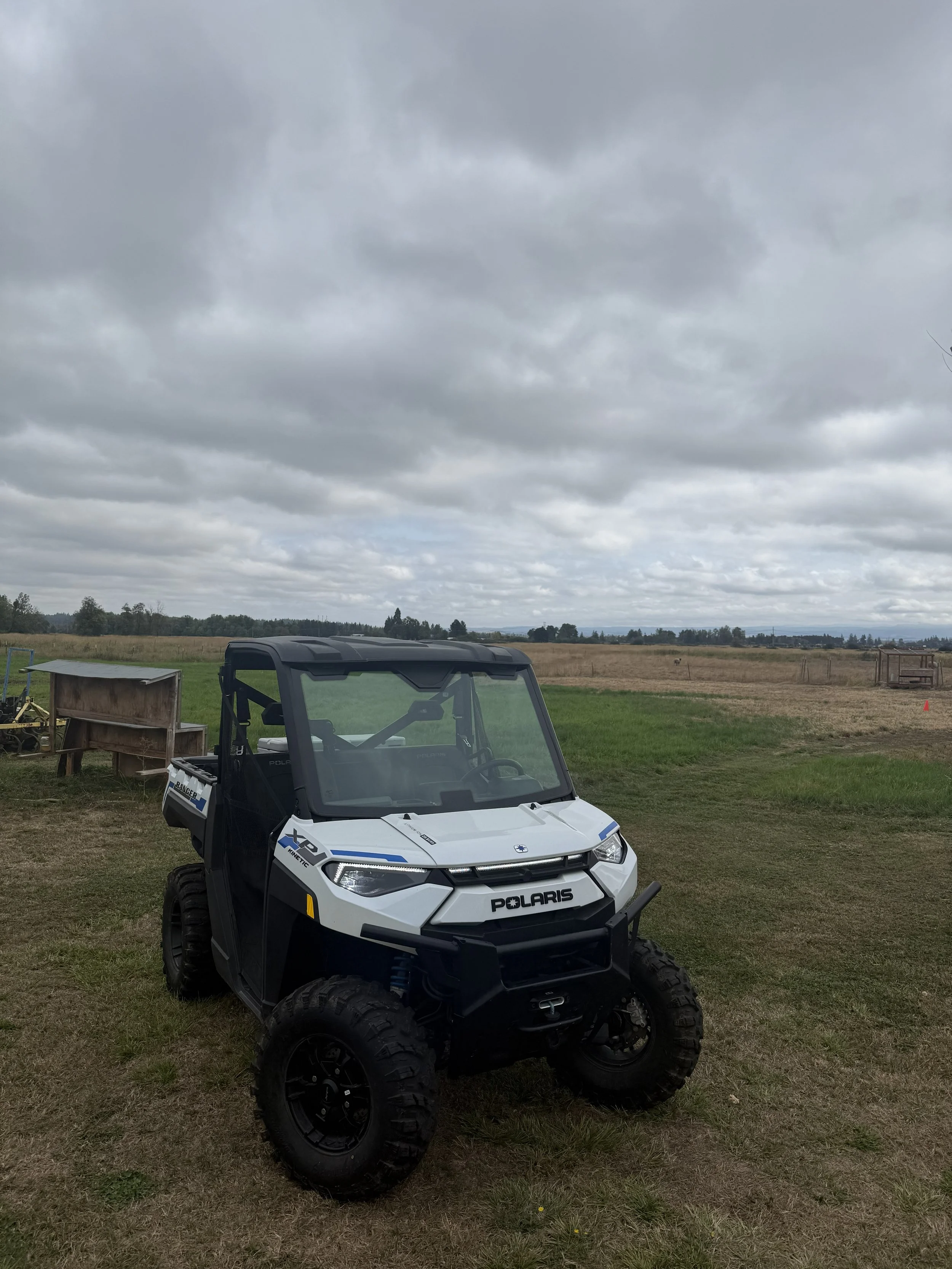

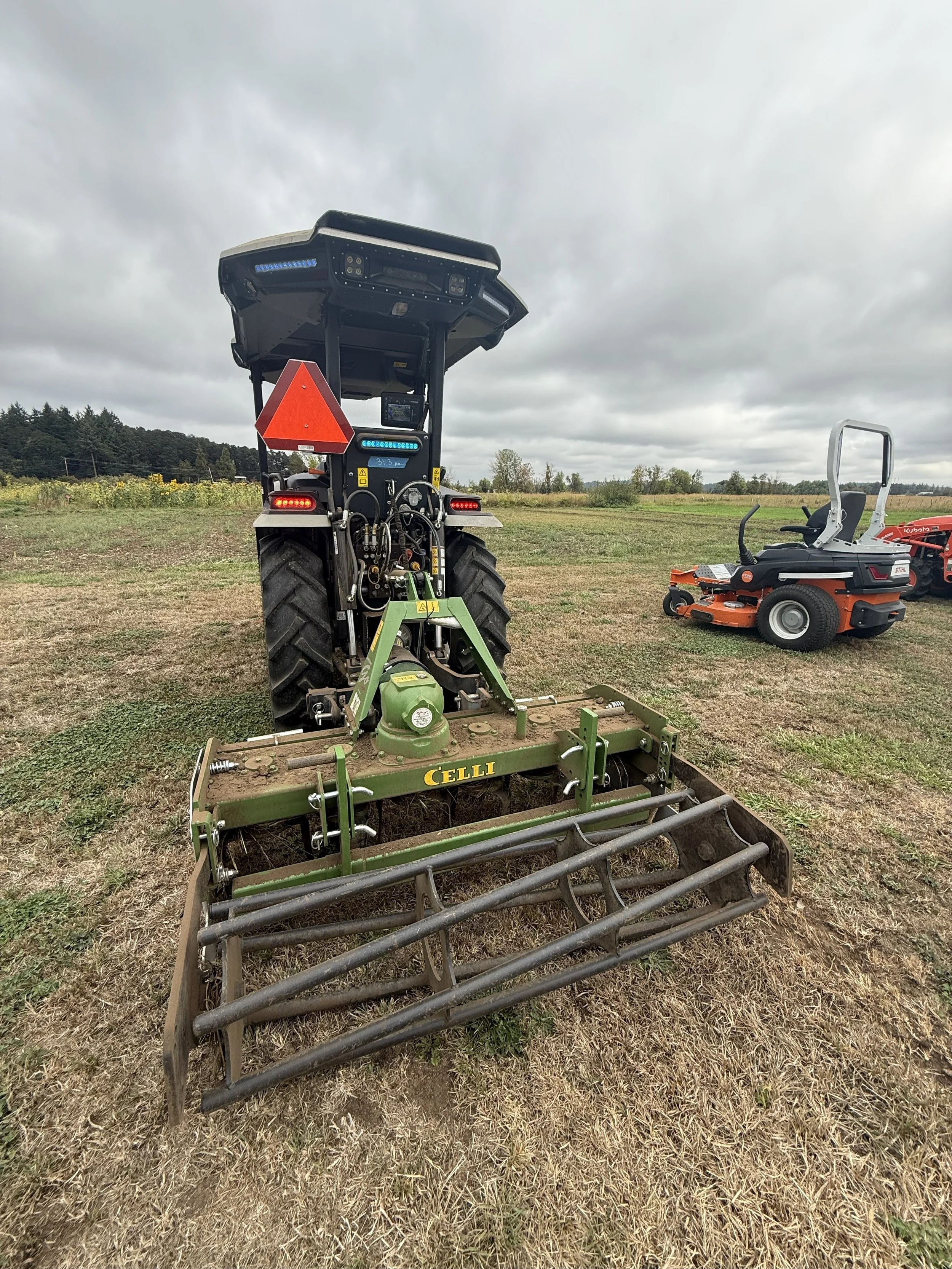

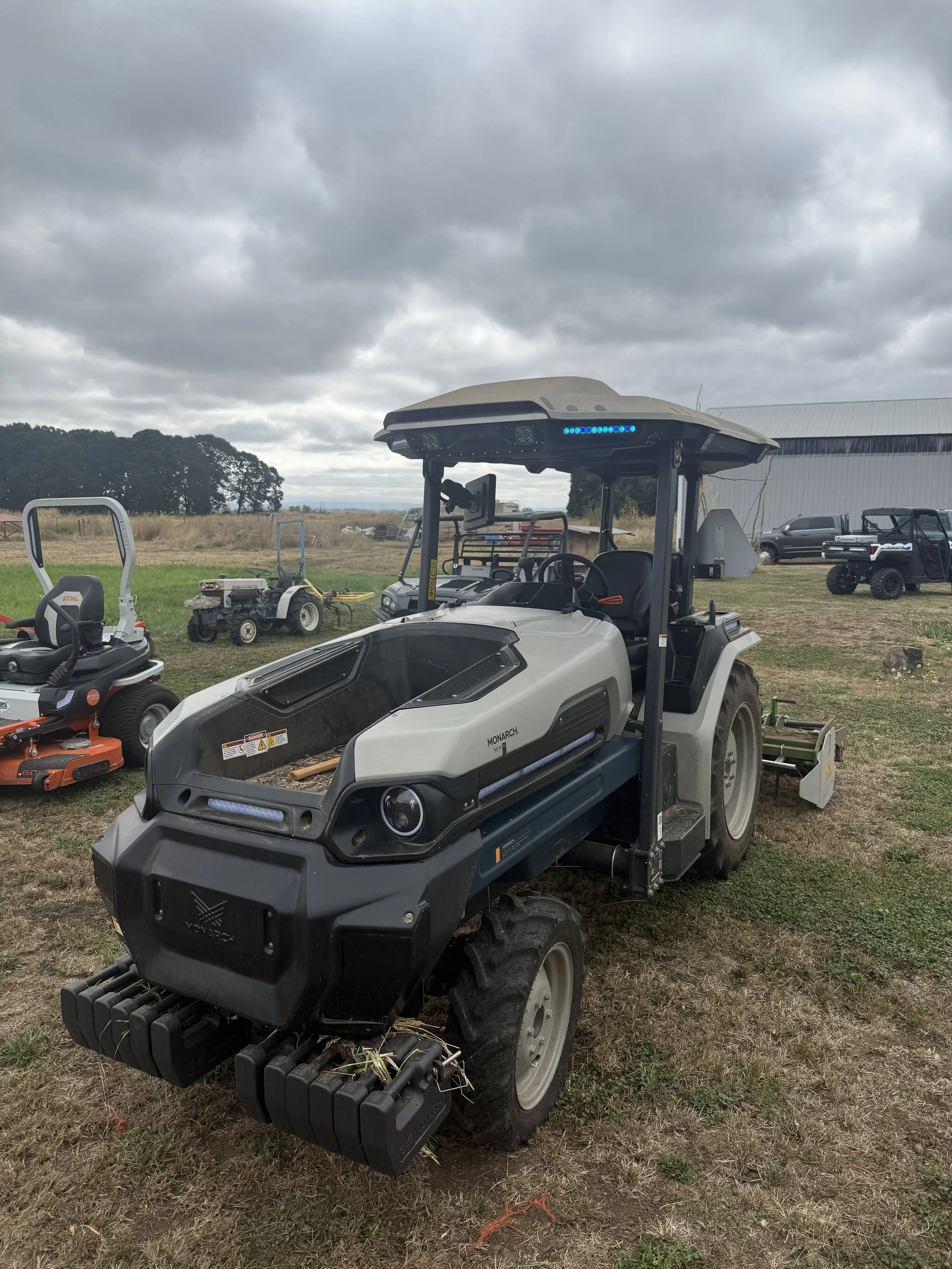


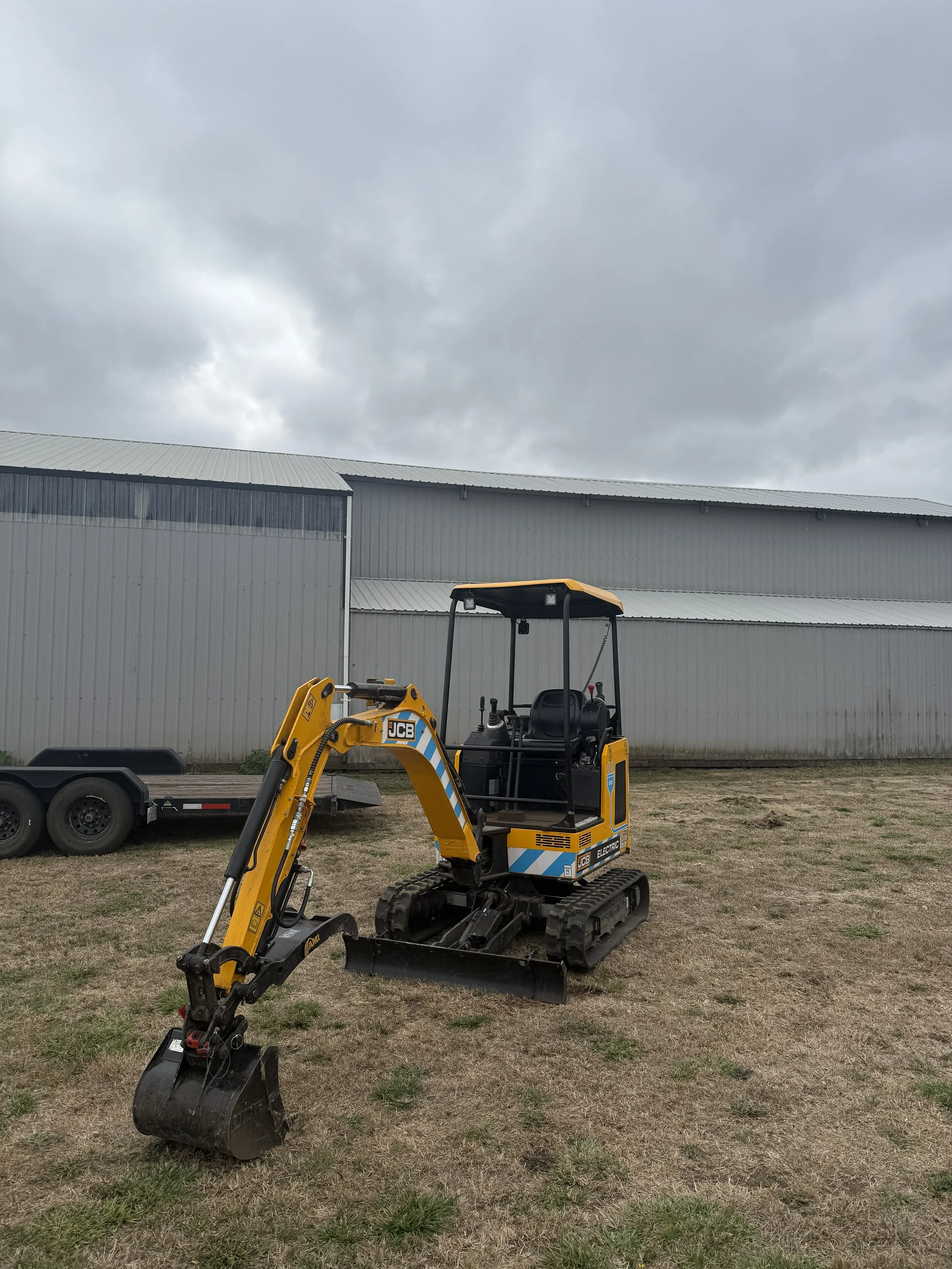

Photo credits Sustainable Northwest

